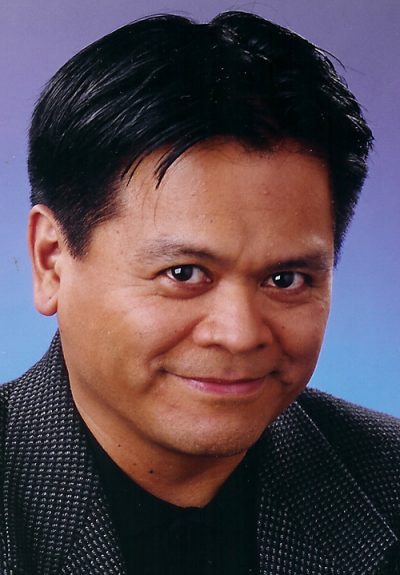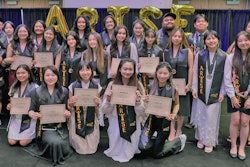If you haven’t heard, there was another George Floyd incident in America.
You know, a policeman’s knee to the back of the neck of a suspect, facedown, cuffed behind his back.
But the victim this time wasn’t African American. He was Asian American of Filipino descent.
 Emil Guillermo
Emil GuillermoHis name was Angelo Quinto. If you don’t know his name, say it a few times because the Quinto story just didn’t get the media coverage it should have.
Want to talk about race and policing in America? Then you should know Angelo Quinto.
Quinto was a 30-year-old who had served in the Navy and honorably discharged in 2019 for a food allergy. According to his family, he was recovering from a brutal altercation where he had developed paranoia and anxiety, and staying at his family’s home in Antioch California, 45 minutes east of San Francisco.
On Dec. 23, Quinto was having a mental health episode. His mother, Cassandra Quinto-Collins tried to calm her son. But her daughter, Bella Collins, 18, was scared that Angelo Quinto would hurt her mother.
She called 911.
And that’s when things went wrong.
Quinto-Collins described her son’s reaction when the police arrived: “[Angelo] said ‘Please don’t kill me. Please don’t kill me,’ as they were putting him on the ground. They handcuffed him and one officer put his knee on the back of his neck the whole time I was in the room.”
The family’s lawyer, noted civil rights attorney John Burris, said Quinto was “snatched” from his mom. Quinto’s sister said one officer held him by the legs while another knelt on Quinto’s neck for nearly five minutes.
In a videotape released by the family’s attorney, Quinto can be seen unconscious on a bedroom floor, his face bloodied. You can see him handcuffed from behind his back as police try to assess the situation. After a minute, Quinto is carried out on a plastic sheet into a hallway. After another minute, finally an attempt is made to resuscitate him.
“Does he have a pulse, what is happening?” Quinto’s mother can be heard saying in her Filipino accent. The responders can be heard pumping Angelo Quinto’s chest in vain.
Quinto-Collins later expressed her shock. “I trusted the police because I thought they knew what they were doing, but he was actually passive and visibly not dangerous or a threat. So it was absolutely unnecessary what they did to him.”
Angelo was unconscious when taken to the hospital and died three days later on Dec. 26.
Everything was kept under wraps until the last two weeks. Nothing from the police. Nothing from the family.
Then on Feb. 18 this year, noted civil rights attorney John Burris filed a complaint against Antioch, California, to begin the process that, according to Burris, should ultimately lead to the filing of wrongful death and federal civil rights lawsuits on behalf of Quinto and his family.
How Quinto died makes this case important not just to Antioch, but to the nation.
“I refer to it as the George Floyd technique; that’s what snuffed the life out of him and that cannot be a lawful technique,” Burris said, indicating the similarities between Quinto’s death and the death of Floyd, a Black man who yelled, “I can’t breathe” as a police officer placed a knee to his neck.
“We know the young man’s dead as a consequence of police activity,” Burris said, adding that officers didn’t have to “snatch him from his mother’s person,” but rather talk to him in order to de-escalate the situation. “All they had to do is follow the rules.”
But they didn’t. And that’s why this story must be heard.
The story comes as the media has finally noticed that Asian Americans have increasingly become targets of violence.
It only took a year, but a number of instances, including an elderly Asian man shoved to the ground, one of whom died, have been caught on camera.
Shining a light on those instances in the media has made people aware.
The Quinto incident is different. Quinto’s story involves a police officer. And it involves a technique that riled up the nation in the midst of a pandemic.
The question is why is Quinto’s story localized and not widely known.
It may be a time of reckoning for the Filipino American community, said Professor Dan Gonzales, professor of Asian American Studies in the College of Ethnic Studies at San Francisco State University on my podcast, “Emil Amok’s Takeout.”
Gonzales has noticed that among Asian American groups, the Filipino American community has been insular, split by generations that have often harbored racist sentiments toward others.
Generally, Japanese Americans have been quick to support solidarity and diversity efforts across race lines, Gonzales told me, primarily because of the group’s being incarcerated during WWII. They know the value of having and not having alliances in the fight for justice.
That Quinto’s lawyer is Burris, an African American attorney experienced in police wrongful death cases, is telling. Burris said that winning the fight for justice will take a community to “rise up” and ask uncomfortable questions of people in power.
But there are also uncomfortable questions for the Filipino American, the Asian American and even the broader #BLM movement.
Is it diverse and as steeped in solidarity as we’ve all assumed? If so, time to get to know Angelo Quinto.
Emil Guillermo is a journalist and commentator. He appears on the Asian American Legal Defense and Education Fund blog. You can follow him on Twitter @Emilamok




















